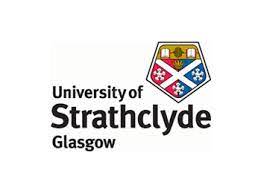University of Strathclyde: Children and teens more physically active but inequalities remain
Physical activity levels in children and teenagers across Ireland and Northern Ireland have improved slightly over the past eight years but not all children and teens have an equal chance to be active, a new Active Healthy Kids Report Card has found.
In research involving Strathclyde, the Ireland North and South Report Card on Physical Activity for Children and Adolescents found a slight improvement in overall physical activity levels across the island since 2016 but also identified inequalities.
The Report Card was produced as part of the Active Healthy Kids Global Alliance, established in 2014 to create a world of active healthy kids. Close to 70 countries have signed up and taken part in the global alliance.
Ireland’s Report Card is the second to have significant involvement from Strathclyde researchers from the Physical Activity for Health Group in the School of Psychological Sciences & Health. Scotland’s Report Card, published in November 2021, was led by Strathclyde. Both cards will be part of global league table of grades to be launched in the autumn.
Under the initiative the cards are generated using a standardised grading system, with grades from A for succeeding with a large majority of children to F for succeeding with few children.
Physical activity
The 2022 Report Card provides a grade across eleven indicators for physical activity among children and teenagers. Across Ireland, it is recommended that children and adolescents, aged six-17 years, attain on average 60 minutes per day of moderate-to-vigorous intensity physical activity throughout the week.
On evaluating data, the team of investigators awarded a C minus grade for overall physical activity, representing a slight improvement on the D grade awarded in 2016. Physical activity grades also improved for ‘School’ (C minus) and ‘Physical Education’ (D), while other indicators remained unchanged or inconclusive.
The team of investigators – including from Ulster University, the Institute of Public Health, Dublin City University, Munster Technological University, the University of Limerick, and the University of Eastern Finland, also found evidence of inequalities across a range of indicators with disability, gender, social economic status and age all impacting on physical activity levels.
Peer support
The report also found that children with disabilities required more family and peer support to be physically active.
There were also differences by gender and age, with more males meeting the guidelines than females, with younger children more likely to meet the guidelines than adolescents.
The report made several recommendations, including the need for a framework for the systematic surveillance of indicators related to physical activity for children and teens with disabilities.
Dr Deirdre Harrington from Strathclyde, who chaired the inaugural Report Card for Ireland in 2014 and sat on the working group of the 2022 Report Card, said: “It is so valuable to have an updated Report Card for Ireland North and South in 2022. We will join Report Cards from 56 other countries, including Scotland, in a Global Matrix of grades to be launched in late October.
“Ireland’s Report Card has evolved since I first led it in 2014 with more stakeholders involved than ever. The grades continue to show that a lot of work still needs to be done to keep our children and teens active and healthy.”
The North South Report Card was funded by the Public Health Agency, Department of Health and Healthy Ireland, Sport Northern Ireland, Sport Ireland, and the Institute of Public Health.

